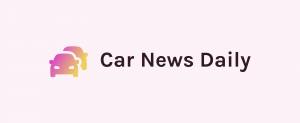The used car inventory rose 4.7% in September, but the improved supply did nothing to contain price growth.
The average listed used car has increased by 6.2% since August and is up by 28.6% year-on-year, according to the latest used car availability index from CarGurus.
Kevin Roberts, Director of Industry Insights and Analytics at CarGurus, said, “There was hope that August could mark a turning point in the ongoing chip scarcity currently plaguing the global auto industry; However, that hope came and went with the reality that a solution is not likely in 2021.
“Seasonal changes, as well as some exogenous shocks, shifted the narrative as we bow to the third quarter. However, the underlying uncertainty due to the high demand and limited supply remains. “
While CarGuru’s report shows that inventories rose in September, Roberts said this was likely caused by both a cyclical decline in used sales in September and the end-of-month gasoline shortage that could cause consumers delay their purchases.
He continued, “One trend that continued and gained momentum in September was the increase in average list prices. The average used price rose 6.2% to £ 17,928; the number is even more impressive compared to last year, prices are now up 28.6%. As new vehicle assembly is expected to continue to be affected in 2022, it is likely that we will see further price increases in the coming months. “
The record increases in used cars in September were celebrated by Cap HPI as a “black swan event”, with Derren Martin, the valuation manager, describing it as “extraordinary” for the seventh month in a row with rising prices.
A market analysis by the review provider showed that after three years and 60,000 miles, live reviews had seen an average increase in value of 5.9% – the equivalent of £ 860 – and that such an increase was not expected.
In monetary terms, the increase was the largest ever seen by Cap HPI, beating the 6.7% increase in June’s monthly figures, which was equal to £ 825.
Another data point highlighted by CarGurus that continued to accelerate was the days on the market, which dropped to 56 days in September – an 8.8% decrease from August and 18.4% year-over-year.
Seasonal declines in used sales could help boost the used inventory somewhat in the fourth quarter, according to Roberts. However, with new production still hurting, he said gains are likely to be modest, if at all, and average list prices could rise if consumer demand remains strong.

